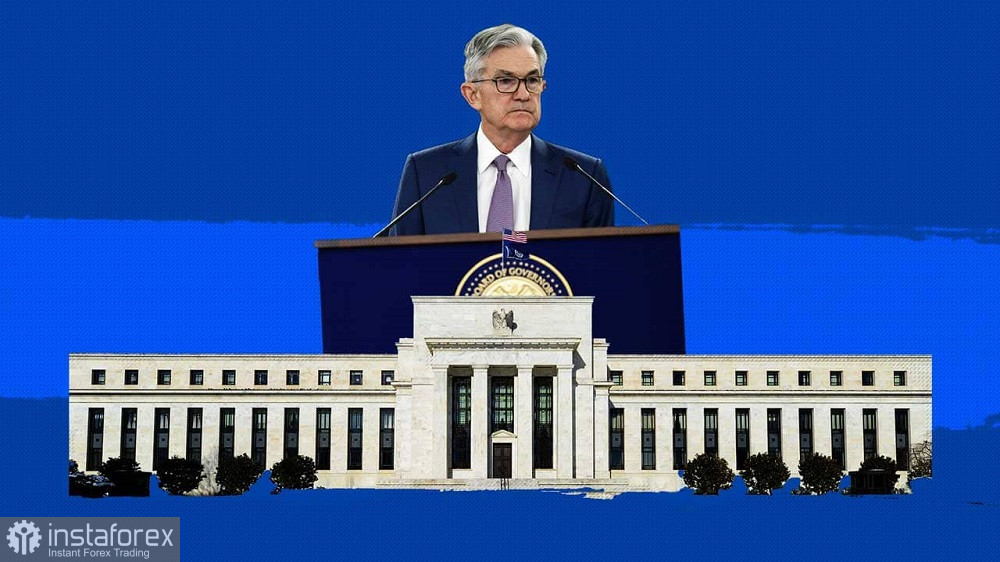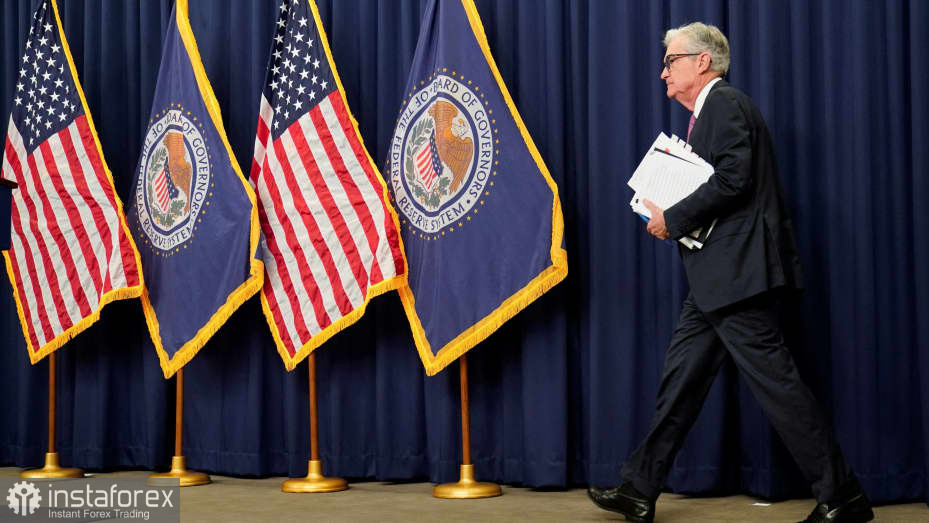The results of the July meeting of the Federal Reserve were not in favor of the American currency—of all the possible scenarios, the Fed implemented perhaps the most dovish one. Undoubtedly, the regulator could have gone even further, keeping the rate unchanged or announcing the end of the cycle, but given the market's general expectations (the probability of a rate hike was 99.5%), such a decision would have been akin to shock therapy. The U.S. regulator tries to avoid such scenarios, so yesterday, it attempted to maintain a balanced tone in its rhetoric. But as they say, you can't hide a tree in a forest. One can engage in verbal acrobatics endlessly, but the fact remains: further rate hikes are now in question. The tightening of the monetary policy will depend on the dynamics of key macroeconomic indicators, primarily in the area of inflation.

In the run-up to the July meeting, some representatives of the Federal Reserve (including Christopher Waller and Mary Daly) voiced a rather hawkish rhetoric when commenting on the latest inflation data. Despite the "red" key reports, they stated that it is still too early to declare victory over inflation. In their opinion, the Federal Reserve should maintain a hawkish stance to finally resolve the "inflation issue." Such hawkish signals sharply contrasted with reports on the growth of the consumer price index and the producer price index, which reflected an active slowdown in inflation in the United States. Against the backdrop of Waller and Daly's statements (which were fueled by good data in consumer confidence and the manufacturing sector), the dollar actively strengthened its positions ahead of the announcement of the results of the July meeting. Dollar bulls nurtured hopes that the Federal Reserve would maintain a fighting spirit and clearly hint at further steps towards tightening monetary policy.
However, that did not happen. The American regulator did not say "yes" or "no," tying the fate of the interest rate to the dynamics of key macroeconomic indicators. The central bank kept the key formulations of the accompanying statement unchanged, and Jerome Powell did not confirm another rate hike after the July meeting. This indecisive position of the Federal Reserve was interpreted against the greenback: the U.S. dollar index hit a weekly low, returning to the base of the 100 mark.
It is worth noting that during the final press conference, Fed Chairman Jerome Powell duly evaluated the inflation reports for June, stating the obvious fact: inflation in the U.S. is decreasing. However, he refrained from making far-reaching conclusions based on the data releases—according to him, the Federal Reserve will closely monitor whether the signal voiced by the June CPI index will be repeated in July and August (as a reminder, the next FOMC meeting will take place in September).
As for the further prospects of tightening monetary policy, Powell displayed what can be called his true colors, answering this question with ambiguous veiled phrases. According to him, the September meeting of the Federal Reserve may end with either another rate hike or keeping it unchanged. At the same time, he emphasized that the regulator will assess the entirety of macroeconomic data in the fall "with a special focus on progress in inflation."
In other words, the fate of the interest rate will depend on new data that the Central Bank currently does not have. The "past merits" in the form of June's inflation and producer price index slowdowns are not taken into account when considering possible decisions in September. However, it is evident that if inflation in July maintains the same declining trend as in June, then one can confidently speak about an established pattern. In that case, the likelihood of another rate hike in September will be minimal.

In my view, this is the baseline scenario. Similar opinions were voiced by some currency strategists when commenting on the outcomes of the July meeting. In particular, according to experts from Commerzbank, yesterday's rate hike will be the last one this year. The bank's economists expect weaker data on U.S. economic growth and further inflation deceleration, so they are confident that the interest rate has already reached its peak value.
Obviously, if key inflation indicators for July turn out to be even slightly lower than those in June, one can reasonably talk about maintaining the status quo at the September meeting. According to the CME FedWatch Tool, the probability of a 25-point rate hike in September is currently only 20% (thus, the probability of a pause is 80%). The August block of macroeconomic statistics (especially in the area of inflation) can reduce the likelihood of additional tightening of monetary policy to zero or increase it (approximately) to 50–60%.
Reacting to the outcomes of the July Federal Reserve meeting, the EUR/USD pair returned to the 1.11 area. However, buyers of the pair were unable to overcome the resistance level at 1.1150 (the Tenkan-sen line on the daily chart). This indicates that opening long positions on the pair is premature, although overall, the fundamental backdrop is against the greenback.
Ahead is the ECB meeting, as well as Christine Lagarde's final press conference. Additionally, today, we will find out the data on U.S. economic growth in the second quarter – this release can also contribute to the price formation process of the pair. Therefore, today, it is prudent for EUR/USD traders to take a wait-and-see position until all pieces of the fundamental puzzle come together.
 English
English 
 Русский
Русский Bahasa Indonesia
Bahasa Indonesia Bahasa Malay
Bahasa Malay ไทย
ไทย Español
Español Deutsch
Deutsch Български
Български Français
Français Tiếng Việt
Tiếng Việt 中文
中文 বাংলা
বাংলা हिन्दी
हिन्दी Čeština
Čeština Українська
Українська Română
Română

